Remarking on the natural human propensities toward both pride and ease, Francis Bacon observed “A man will become attached to one particular science and field of investigation either because he thinks he was its author and inventor or because he has worked hard on it and become habituated to it.” This strikes most of us as deeply human, and likely familiar—we stick to what we know. “But when someone of this kind turns to general topics in philosophy and science,” Bacon continues, “he wrecks them by bringing in distortions from his former fancies. This is especially visible in Aristotle, who made his natural science a mere bond-servant to his logic, rendering it contentious and nearly useless.”Francis Bacon, The New Organon: or True Directions Concerning the Interpretation of Nature, 1.55.
Prior to the scientific revolution, inquiry into the workings of the natural world languished in captivity to the church, imprisoned by the chains of religious dogma and blinded by the darkness of Aristotelian philosophy. But then came Copernicus, Kepler, Galileo, and Newton, who liberated the world from its captivity through their discoveries and inaugurated an era of ever increasing progress in our understanding of the cosmos. And with this new era, Aristotelianism had been rendered obsolete. Bacon’s diagnosis—that Aristotle’s metaphysics can be nothing but a hindrance to scientific progress—was proven true.
Or so one common narrative goes.
The ‘What’ of Creation
Paul Gould, a member of the 2019–2020 Henry Resident Fellowship community, will be adding his voice to a growing number of philosophers“When God created the universe, just what is it that he made? One’s view of nature and the natural—its ontological inventory and joints, its fundamental and derivative character—significantly informs how this question is answered.” who are calling significant portions of this narrative into question.
“When God created the universe,” Gould asks, “just what is it that he made? One’s view of nature and the natural—its ontological inventory and joints, its fundamental and derivative character—significantly informs how this question is answered.” Following Katherine Sonderegger, Paul notes that historically, there have been two prominent answers to the question: Influenced by Hume, one school of thought construes the ‘what’ of creation as the infinitesimal—it is fundamental particles, along with the laws which govern them, that make up the ‘what’ God created.Katherine Sonderegger, “Creation,” in Mapping Modern Theology: A Thematic and Historical Introduction, edited by Kelly M. Kapic and Bruce L. McCormack (Grand Rapids: Baker Academic, 2012), 100–107. This view can be termed reductionist, because the objects of our common experience—everything from rhododendrons to rhinoceroses—aren’t fundamental, they’re merely collections of the truly fundamental stuff, particles.
The alternative view understands the ‘what’ of creation rather differently. Gould describes it like this: “What God has made are all the things we see and know on the earth and in the heavens. God’s creates the familiar inanimate and animate objects of our everyday experience: rocks and trees, people and possums, planets and pulsars, and more besides. The goal on this reading of God’s creative activity is substances.” When he joins the resident community at the Henry Center, Gould plans to construct a defense of this latter view, drawing on philosophical resources from a recent revival in neo-Aristotelian philosophy.
The Neo-Aristotelian Revival
The last two decades have witnessed a significant resurgence of broadly Aristotelian approaches within contemporary analytic philosophy. The story of how exactly this came about is a complicated one: Saul Kripke’s work in logic and metaphysics laid some of the groundworkPhilosophical concepts like necessary causes—and, to an even greater extent, substances—have historically played critical roles in the doctrines of creation, Christology, and the Trinity. for the Aristotelian revival by putting essentialism back on the table; Nancy Cartwright’s The Dappled World did brush clearing in the philosophy of science by arguing against the one grand, unified ‘theory of everything’ approach to the sciences, and for the necessity of multiple explanatory frameworks. But there have also been motivations arising from questions within the sciences themselves: Aristotelianisms of various stripes have been employed to solve questions in evolutionary biology, quantum mechanics, psychology, and neuroscience.For some representative examples, see: William M. R. Simpson, Robert C. Koons, and Nicholas J. Teh, eds., Neo-Aristotelian Perspectives on Contemporary Science, Routledge Studies in the Philosophy of Science 17 (New York: Routledge, Taylor & Francis Group, 2018).
Gould plans to leverage this recent work in developing an account of divine creative activity. “If plausible models of the fundamental causal relationship (i.e., creation) between the immaterial and the material, the necessary and the contingent, and the eternal and the temporal can be developed along neo-Aristotelian lines,” Gould says, “then the prospect of developing a comprehensive account of divine activity in the world (including sustenance, providence, and the miraculous) consonant with contemporary science and a sacramental view of the world increases.” Gould’s project recognizes that the neo-Humean view of the world sits uncomfortably with a number of traditional Christian theological systems. Philosophical concepts like necessary causes—and, to an even greater extent, substances—have historically played critical roles in the doctrines of creation, Christology, and the Trinity. If the neo-Humean view of the world can be shown to be inadequate precisely where its motivations are thought to be strongest—its apparent consistency with modern science—new possibilities open up. Gould explains:
My desire is to see if this revival of a more ancient way of looking at the cosmos (rooted in Aristotle and developed historically by Aquinas, among others) can play a role in showing the plausibility of a sacramental view of reality to those (in the academy, the church, and culture at large) under the spell of Hume and his disciples.
Uncovering the Roots of the Universe
Gould’s project has three parts. “In Part 1, I explore the conceptual landscape related to universe building. What would be involved in building a well-founded (i.e., rational and ordered) universe full of simple and composite objects?” Gould identifies two structures—the mereological (order with respect to parts and wholes), and the metaphysical (ordered with respect to metaphysical priority and posteriority)Gould identifies two structures—the mereological and the metaphysical—both of which are necessary for a well-founded universe. His fundamental starting point is the ‘built’ (that is, contingent) nature of the universe.—both of which are necessary for a well-founded universe. His fundamental starting point is the ‘built’ (that is, contingent) nature of the universe. Part 1 explores questions raised by these structures and the contingent nature of the universe, such as the composition of the cosmos, and the unity and relations between he parts. Part 2 digs into the roots of the material cosmos, where Gould will explore questions of fundamentality, grounding relations, and material hierarchies. Part 3 turns to the doctrine of creation. “A complete description of the universe will not only explain what exists but how it arose,” Gould notes. “Scripture and the Christian tradition teach that God is the ex nihilo creator of all distinct reality, including things that exist later than the initial moment of the physical universe. At the first moment of time, God brings into being something out of nothing. That something, I’ll argue, is a substance.”
While Gould’s current project focuses on material reality, it is also nested in a larger research agenda: after completing this project, Gould intends to turn his sights to a more comprehensive treatment of the metaphysics of creation, tackling the how, what (the principle subject of his current research), where, when, and why of creation, engaging the relevant biblical, philosophical, and scientific material in order to answer these five questions. Gould will begin this larger project during his time in the Resident Fellowship, and will be taking an important first step toward reviving a more ancient—and perhaps, more scientifically plausible—way of understanding the natural world as the product of God’s gracious creative action.
2019-2020 Henry Resident Fellows
 |
Henry Fellows Announced Theme Year: Divine Action, Contingency, and Modern Science |
 |
Craig Bartholomew Director, Kirby Laing Institute for Christian Ethics Project: “Creation, Divine Action, the Old Testament, and Modern Science” |
 |
Craig Keener Professor of Biblical Studies, Asbury Theological Seminary Project: “The Credibility of Special Divine Action in Mark’s Gospel and Today” |
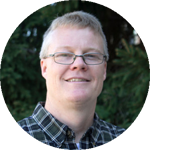 |
Brian Matz Endowed Chair in Catholic Thought, Fontbonne University Project: “Divine Action and Contingency in a Little-Known Medieval Debate over Foreknowledge” |
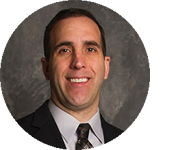 |
Paul Gould Founder and President, Two Tasks Institute Project: “Neo-Aristotelian Accounts of Divine Creation” |
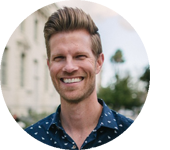 |
Jordan Wessling Curriculum Development Specialist and Adjunct Instructor, Fuller Theological Seminary Project: “Divine Action and the Autonomy of Creation” |

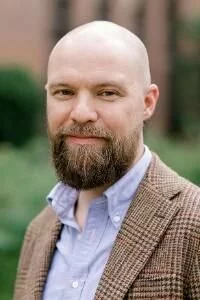

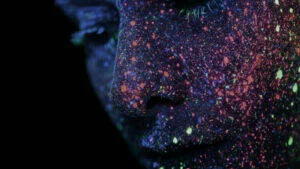
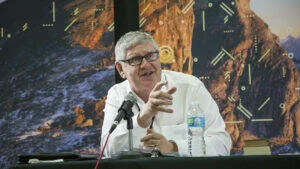

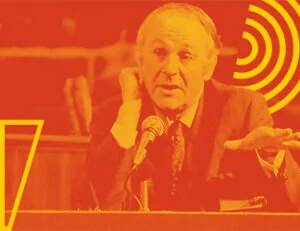
Comments
Be the first one to make a comment!